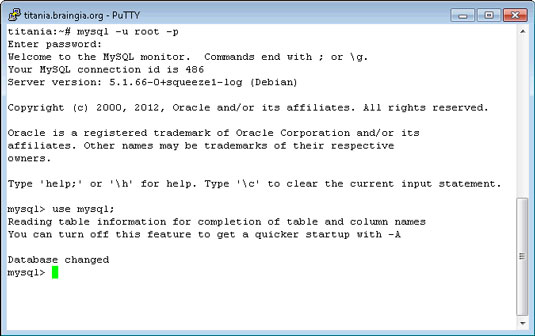
Information_schema and mysql are name of databases.
#Sql prompt for mysql how to#
To list database type the following command mysql> show databases Well organized and easy to understand Web building tutorials with lots of examples of how to use HTML, CSS, JavaScript, SQL, Python, PHP, Bootstrap, Java. At that point, you can enter any SQL commands to run on the database.
#Sql prompt for mysql password#
You may need to provide mysql username, password and hostname, use: $ mysql -user=your-user-name -password=your-password One you open a MySQL shell, youll see a prompt similar to this: mysql>. With SQL Prompt you can select an object or synonym from Object Explorer directly from the query window. To customize the prompt theme file, either set the MYSQLSHPROMPTTHEME environment variable to a prompt theme file name, or copy a theme file to the /.mysqlsh/prompt.json directory on Linux and Mac, or the AppData\MySQL\mysqlsh\prompt.json directory on Windows. DELIMITER // CREATE PROCEDURE GetPerson (plname VARCHAR (50)) BEGIN SELECT fname, age, address FROM person WHERE lname plname END // DELIMITER and then be able to. The prompt of MySQL Shell can be customized using prompt theme files. Invoke it from the prompt of your command interpreter as follows: $ mysql Use SQL Prompt to script out an object in a query simply by right clicking and choosing Script Object as ALTER from the menu. You may want to create a stored procedure such as. mysql is command line and it is very easy to use. To list all the databases execute this command in terminal: mysql -u root -p -e 'show databases'

It will silently create a database mydb without giving any message/output. To create database mydb execute following command in terminal: mysql -u root -p -e 'create database mydb' If you want to select all the information from person and want to save in a file: mysql -u root -p -e 'Select * from person' mydb > personinfoĪnd of-course you can create a database using terminal itself Redgate produces specialized database management tools for Microsoft SQL Server, Oracle, MySQL and Microsoft Azure. If you want to insert values in person: mysql -u root -p -e 'Insert into person(PersonID,LastName,FirstName) Values(100,"Kumar","Saurav")' mydb It conducts events such as SQL in the city. Similary you can execute any query you want. Where root is the username, mydb is the name of the database. If you want to create a table person then: mysql -u root -p -e 'Create table person(PersonID int, LastName varchar(255), FirstName varchar(255))' mydb For exporting MySQL table from MySQL prompt to csv file (will require root permission most likely) : SELECT columnname FROM tablename INTO OUTFILE '/tmp/outfile. (Type either exit or quit and press enter) You can also use some shorthand to exit or quit the command line. And you wish to go back to your command shell. Syntax: mysql -u user_name -p password -e 'SQL Query' databaseĬlearificance: -u : Specify mysql database user name So for example, say you’re sitting at the mysql command line and it looks like this.

Here is the syntax to execute sql statement from terminal


 0 kommentar(er)
0 kommentar(er)
